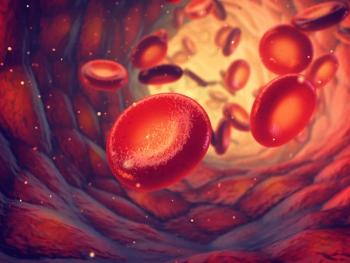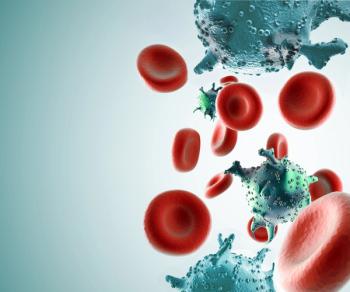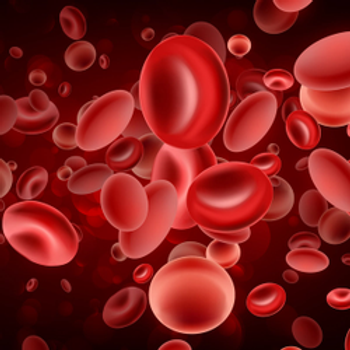
Potential Biomarker May Predict Outcomes/Response in RCC
A new biomarker, KIM-1, has the potential to show outcomes and response for patients with renal cell carcinoma.
Clinical decision making may now be informed by a new prognostic biomarker, kidney injury molecule-1 (KIM-1) as a response to therapy, and may help clinical decision-making for patients with renal cell carcinoma (RCC), according to a presentation by Wenxin (Vincent) Xu, MD, given during the
“We know that KIM-1 is overexpressed in kidney tumors, especially those coming from the proximal tubular epithelium and [that] it's shed into circulation,” Xu, a medical oncologist at Dana-Farber Cancer Institute and an assistant professor of medicine at Harvard Medical School, both in Boston, Massachusetts, said during the presentation. “It has [also] been shown that KIM-1 is not just elevated in the blood, but it’s elevated in the blood per bank sample up to 5 years before kidney cancer diagnosis. This [has] led to the question of whether we can validate KIM-1 as a potential circulating biomarker to detect kidney cancer, to risk stratify, and to indicate the likelihood of response.”
Xu began his presentation by noting that KIM-1 has been examined as a potential biomarker across the disease spectrum of RCC, including in clear cell and papillary disease. Findings published in the Journal of Clinical Oncology indicated that prenephrectomy plasma KIM-1 levels displayed a 92.5% sensitivity and 60% specificity in terms of identifying clear cell RCC vs benign renal masses.2 Additional data showed that high KIM-1 levels were associated with worse metastasis-free survival in multiple cohorts of patients.
“[Patients] with higher KIM-1 [with] a renal tumor are more likely to have aggressive malignancies, of the tumor after nephrectomy, and, ultimately, a higher chance of dying from kidney cancer,” Xu noted.
Moreover, the presence of persistent KIM-1 following nephrectomy has been associated with disease recurrence, Xu said. Findings from the phase 3 ECOG-ACRIN E2805 (ASSURE; NCT00326898), CheckMate 914 (NCT03138512), and IMmotion010 (NCT03024996) studies showed that KIM-1 was a strong prognostic biomarker for progression-free survival, disease-free survival (DFS), and DFS, respectively.1
Furthermore, ASSURE compared sunitinib (Sutent) vs sorafenib (Nexavar) vs placebo in patients with nonmetastatic stage II to IV RCC. CheckMate 914 evaluated nivolumab (Opdivo) plus ipilimumab (Yervoy) vs placebo in patients with RCC with predominant clear cell histology following radical or partial nephrectomy. In IMmotion010, patients with resected intermediate- to high-risk RCC with a clear cell and/or sarcomatoid component were randomly assigned 1:1 to receive atezolizumab (Tecentriq) or placebo.
KIM-1 Shows Response Prognostication for Multiple Regimens
For patients with metastatic disease, data from a post-hoc analysis of the phase JAVELIN Renal 101 (NCT02684006) trial demonstrated that patients with high KIM-1 levels (n = 306) experienced a PFS (log-rank P = .0011) and overall survival (OS; log-rank P < .0001) benefit compared with those with low KIM-1 levels (n = 306).3 The results were presented during the
In IMmotion010, patients with high KIM-1 experienced a significant DFS benefit with adjuvant atezolizumab compared with those who received placebo (HR, 0.72; 0.53-0.99). The respective median DFS values in the atezolizumab (n = 151) and placebo (n = 149) groups were not evaluable (NE) and 21.16 months.4 Notably, patients in the KIM-1–low subgroup did not experience a DFS benefit with atezolizumab (n = 229) vs placebo (n = 223), and the median DFS was 57.23 months vs NE, respectively (HR, 1.12; 0.88-1.63).
Xu also noted that the KIM-1 ratio at 3 weeks has been shown to be predictive of response to immunotherapy in the metastatic setting. Specifically in the phase 3 CheckMate 214 trial (NCT02231749), patients who received nivolumab plus ipilimumab who experienced greater than a 30% increase in KIM-1 ratio at 3 weeks had a significant worsening of OS compared with those who did not (HR, 2.40; 95% CI, 1.70-3.40).5 Additionally, patients with a greater than 10% increase (HR, 1.99; 95% CI, 1.36-2.91), a less than 10% change (HR, 1.48; 95% CI, 1.05-2.09), and those with a greater than 10% decrease (HR, 1.33; 95% CI, 0.93-1.88) all experienced worsened OS outcomes.
Regarding overall response rate (ORR), the ORR among patients with a 30% decrease in KIM-1 rate (n = 140) was 69.3% (95% CI, 60.9%-76.8%). Patients with a greater than 10% to 30% decrease (n = 87), less than a 10% change (n = 86), a greater than 10% to 30% increase (n = 56), and a greater than 30% increase (n = 72) in KIM-1 rate experienced respective ORRs of 36.8% (95% CI, 26.4%-47.8%), 30.2% (95% CI, 20.8%-41.1%), 23.2% (95% CI, 13.0%-36.4%), and 13.9% (95% CI, 6.9%-24.1%), respectively.
“The KIM-1 ratio, which is defined as the percentage change in KIM-1 from baseline to 3 weeks, was a strong predictor of response to immunotherapy regimens,” Xu explained. “This was particularly striking in CheckMate 214. Patients with a KIM-1 decrease at 3 weeks were the exceptional responders and [those] who failed to have a favorable KIM-1 ratio by the 3-week mark after one dose of nivolumab/ipilimumab were generally not exceptional responders to nivolumab/ipilimumab and had quite poor outcomes.”
Xu concluded his presentation by noting that there are 3 significant unanswered questions regarding KIM-1 as a biomarker: Can patients with low KIM-1 levels safely forgo adjuvant therapy? Should patients with high KIM-1 levels who do not meet KN-564 criteria receive adjuvant therapy? Can KIM-1 help investigators administer nivolumab plus ipilimumab to more patients in a safer manner?
“We give [patients] nivolumab/ipilimumab because we hope for a slam dunk,” Xu said. “[However], one of the main reasons we are held back is a fear of rapid [disease] progression within the first 12 weeks. Many patients who receive nivolumab/ipilimumab and don’t respond fail to make it to second-line therapy. Perhaps by assessing the KIM-1 ratio, we can single out the exceptional responders, and for those who will not have a good response, we can divert them to a more effective regimen ahead of time.”
Disclosures: Xu received research funding from ASCO/Conquer Cancer Foundation, ArsenalBio, DF/HCC Kidney Cancer SPORE, DOD CDMRP KCRP Academy, Merck, and OncoHost. He also holds scientific advisory board or consulting roles with Aveo, Celdara, Deceiphera, Eisai, Exelixis, Jazz, Merck, and Xencor.
References
- Xu W. From bench to bedside: advancing KIM-1 as a tool for clinical decision-making. Presented at: 2025 Kidney Cancer Research Summit; July 17-18, 2025. Boston, Massachusetts.
- Xu W, Gaborieau V, Niman SM, et al. Plasma kidney injury molecule-1 for preoperative prediction of renal cell carcinoma versus benign renal masses, and association with clinical outcomes. J Clin Oncol. 2024;42(22):2691-2701. doi:10.1200/JCO.23.00699
- Machaalani M, Saliby RM, Zhong C, et al. KIM-1 as a circulating biomarker in metastatic RCC: post-hoc analysis of JAVELIN Renal 101. J Clin Oncol. 2025;43(suppl 5):594. doi:10.1200/JCO.2025.43.5_suppl.594
- Albiges L, Bex A, Suarez C, et al. Circulating kidney injury molecule-1 (KIM-1) biomarker analysis in IMmotion010: a randomized phase 3 study of adjuvant (adj) atezolizumab (atezo) vs placebo (pbo) in patients (pts) with renal cell carcinoma (RCC) at increased risk of recurrence after resection. J Clin Oncol. 2025;42(suppl 16):4506. doi:10.1200/JCO.2024.42.16_suppl.4506
- Xu W, Vemula SV, Motzer RJ, et al. Evaluation of circulating kidney injury marker-1 (KIM-1) as a prognostic and predictive biomarker in advanced renal cell carcinoma (aRCC): post-hoc analysis of CheckMate 214. J Clin Oncol. 2025;43(suppl 5):437. doi:10.1200/JCO.2025.43.5_suppl.437
Newsletter
Stay up to date on recent advances in the multidisciplinary approach to cancer.

















































































